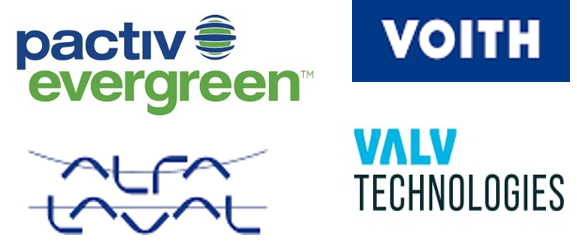Market Overview:
"As per Reports and Insights analysis, the global household food waste composting machine market is expected to register a CAGR of 6.0% over the forecast period of 2025-2033."
|
Report Attributes |
Details |
|
Base Year |
2024 |
|
Forecast Years |
2025-2033 |
|
Historical Years |
2021-2023 |
|
Household Food Waste Composting Machine Market Growth Rate (2025-2033) |
6.0% |
A household food waste composting machine is an environmentally friendly device designed to help families efficiently manage organic waste while supporting soil health. These machines transform food scraps into nutrient-rich compost, which can be used as a natural fertilizer for gardens and plants. The process works by using microorganisms, heat, and oxygen to break down the organic material in the waste.
The growth of the household food waste composting machine market is being propelled by rising awareness of sustainable waste management, increasing urbanization, and supportive government initiatives encouraging eco-friendly practices.
According to a recent study published in the journal Nature Climate Change, the use of household food waste composting machines can reduce methane emissions by as much as 80%. Methane, a potent greenhouse gas far more impactful than carbon dioxide, is a major driver of climate change. By composting food waste at home instead of sending it to landfills, these machines can significantly cut down on methane emissions and contribute to climate change mitigation.
Despite these environmental benefits, several factors may hinder market expansion. One of the primary challenges is the high upfront cost, with machines typically ranging between $100 and $1,000, depending on size and features—an expense that may be prohibitive for many households. Additionally, a lack of public awareness about the advantages of composting and the environmental role these machines play continues to be a barrier to widespread adoption.
Household Food Waste Composting Machine Market Trends and Drivers:
The Household Food Waste Composting Machine market has shown promising growth in recent years, fueled by a range of key drivers. One of the most influential factors is the rising awareness of sustainable waste management practices. As more individuals recognize the importance of responsible waste disposal and the need to reduce their carbon footprint, there has been a growing shift toward eco-friendly solutions such as household composting machines. With increasing support from governments and environmental organizations, demand has risen across residential, commercial, and even small-scale industrial sectors.
Non-profit organizations are also playing a crucial role in promoting the adoption of household composting machines. These groups are actively involved in educating communities about the environmental and practical benefits of composting. For instance, the Composting Council of North America offers a wealth of information on its website and runs a certification program for composting professionals, aiming to expand knowledge and encourage more widespread use.
Urbanization and population growth are also significant market drivers. As more people migrate to urban centers, the volume of household waste increases, necessitating effective and scalable waste management solutions. In this context, household composting machines provide a practical option to manage organic waste efficiently within limited urban spaces. Moreover, the growing popularity of organic farming has further boosted the demand for compost, increasing the appeal of these machines, which convert food waste into high-quality organic fertilizer.
Government initiatives are playing an increasingly supportive role in expanding this market. For example, in 2020, the Singapore government launched a \$1.76 million fund aimed at reducing food waste, which included support for the deployment of household food waste composting machines. Alongside this funding, a public awareness campaign was also introduced to encourage citizens to embrace composting as part of their everyday routine.
Overall, the combination of environmental concerns, population trends, increased advocacy, and supportive government policies is driving strong and sustained interest in household food waste composting machines.
The Household Food Waste Composting Machine market presents significant growth opportunities, particularly within the residential sector. As environmental awareness continues to rise, more consumers are seeking convenient, cost-effective composting solutions for everyday use at home. In response, manufacturers are focusing on the development of compact, energy-efficient, and user-friendly composting machines tailored specifically for residential settings. These innovations are expected to boost adoption and drive demand in the household segment.
One of the key environmental advantages of composting machines is their potential to reduce greenhouse gas emissions by diverting organic waste away from landfills. According to the U.S. Environmental Protection Agency (EPA), food waste represents the second-largest component of municipal solid waste, making up around 22% of landfill contributions. When food waste breaks down in landfills, it generates methane—a greenhouse gas far more potent than carbon dioxide. By processing food scraps into compost at home, these machines help significantly cut methane emissions while producing nutrient-rich compost that supports sustainable agriculture and gardening practices.
Household Food Waste Composting Machine Market Segmentation:
By Product Type
- Countertop Units
- Under-sink/Integrated Systems
- Freestanding Indoor Units
- Outdoor Composters
- Portable Manual Bins
By Energy
- Fully Electric
- Semi-Electric
- Non-Electric
By Decomposition Method
- Thermal Decomposition
- Microbial Digestion (Aerobic)
- Microbial Fermentation (Anaerobic)
- Mechanical Grinding + Dehydration
- Biological Vermicomposting
By Capacity
- ≤1 Kg/Day
- 1–3 Kg/Day
- 3–5 Kg/Day
- 5–10+ Kg/Day
By Output Form
- Dehydrated Waste (Compost Powder)
- Pre-Compost (Fermented Material)
- Fully Cured Compost
- Worm Castings
By End-User
- Urban Apartments
- Suburban Homes
- Rural Settings / Farms
- Shared Housing / Co-living
By Region
- North America
- Latin America
- Europe
- Asia Pacific
- Middle East & Africa
The global household food waste composting machine market is segmented by region into North America, Europe, Asia Pacific, Latin America, and the Middle East & Africa.
According to market analysis, North America holds the largest share of the market, driven by a growing population and increasing awareness of sustainable living practices. Additionally, the region has seen a notable rise in smart home adoption, which often includes smart composting solutions for efficient food waste management.
The Asia Pacific region is projected to be the fastest-growing market during the forecast period. This growth is attributed to a surge in consumer awareness regarding the environmental consequences of food waste. Moreover, regional governments are implementing policies and initiatives that support sustainable living, which in turn is accelerating demand for household composting machines.
Europe is expected to witness significant market expansion, owing to the presence of established players and the growing implementation of smart city initiatives that integrate sustainable waste management technologies. The region is also benefiting from various government-led campaigns encouraging the use of composting machines for managing household food waste.
In Latin America, population growth and a heightened focus on sustainability are contributing to increased demand for household composting machines. Government initiatives aimed at encouraging the adoption of eco-friendly waste management practices are also helping to boost market growth in the region.
Meanwhile, the Middle East & Africa region is anticipated to experience steady market growth, fueled by the growing popularity of smart home technologies and increasing consumer awareness of sustainability. Government-backed programs to promote the use of composting machines for food waste disposal are further expected to support market development in this region.
Leading Companies in Household Food Waste Composting Machine Market & Competitive Landscape:
The household food waste composting machine market is highly competitive, with numerous prominent players operating on a global scale. This competitive landscape is continually evolving, driven by the growing demand for sustainable and efficient food waste management solutions. The market features a mix of well-established global companies alongside small and medium-sized enterprises that cater to regional markets.
Major players in the industry are actively investing in product innovation, forming strategic partnerships, and entering into collaborations to strengthen their market positions. These companies are focused on advancing composting technologies and expanding their distribution networks to meet the rising consumer demand. For example, in April 2022, Whirlpool Corporation partnered with Compostology to develop an intelligent, in-home food composting system, reflecting the industry's emphasis on smart and sustainable product development.
These companies include:
- Oklin International
- Whirlpool Corp.
- Ridan Composting Limited
- KCS Engineering
- beyondGREEN biotech
- Biolan Oy
- Green Planet Solutions
- Sepura Home
- Compost Systems GmbH
- JIANGSU TOPMAKE ENVIRONMENT GROUP CO., LTD.
- Pela
- Breville Group
- Harp Renewables
- MATTIUSSI ECOLOGIA SRL
- Nachurs Alpine Solutions
- 6. Exaco Trading Company
- 7. Vitamix Corporation
- 8. Bokashicycle, LLC
- 9. Oklin International
- Joraform
- Tidy Planet Limited
- Separett AB
- Komposteringsanlæg A/S
- Puxin Biogas
- Smart Cara
- SCD Probiotics
- Enviro World Corporation
- FoodCycler
- Full Circle
- Green Cycler
- Hungry Giant Recycling Inc.
- NatureMill
- Rotoplas S.A. de C.V.
- Keter Plastic Ltd.
- Sino Concept
- Among Others
Household Food Waste Composting Machine Market Research Scope
|
Report Metric |
Report Details |
|
Household Food Waste Composting Machine Market Size available for the years |
2021-2033 |
|
Base Year |
2024 |
|
Forecast Period |
2025-2033 |
|
Compound Annual Growth Rate (CAGR) |
6.0% |
|
Segment covered |
By product type, energy, decomposition method, capacity, output form, end-user, and regions |
|
Regions Covered |
North America: The U.S. & Canada Latin America: Brazil, Mexico, Argentina, & Rest of Latin America Asia Pacific: China, India, Japan, Australia & New Zealand, ASEAN, & Rest of Asia Pacific Europe: Germany, The U.K., France, Spain, Italy, Russia, Poland, BENELUX, NORDIC, & Rest of Europe The Middle East & Africa: Saudi Arabia, United Arab Emirates, South Africa, Egypt, Israel, and Rest of MEA |
|
Fastest Growing Country in Europe |
Germany |
|
Largest Market in Asia Pacific |
China |
|
Key Players |
Oklin International, Whirlpool Corp., Ridan Composting Limited, KCS Engineering, beyondGREEN biotech, Biolan Oy, Green Planet Solutions, Sepura Home, Compost Systems GmbH, JIANGSU TOPMAKE ENVIRONMENT GROUP CO., LTD., Pela, Breville Group, Harp Renewables, MATTIUSSI ECOLOGIA SRL, Among Others |

